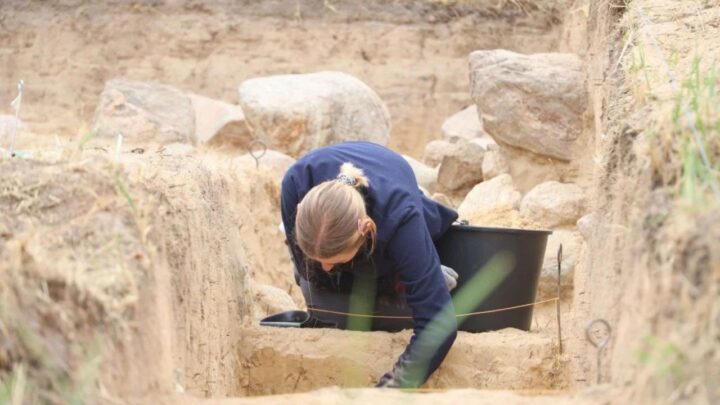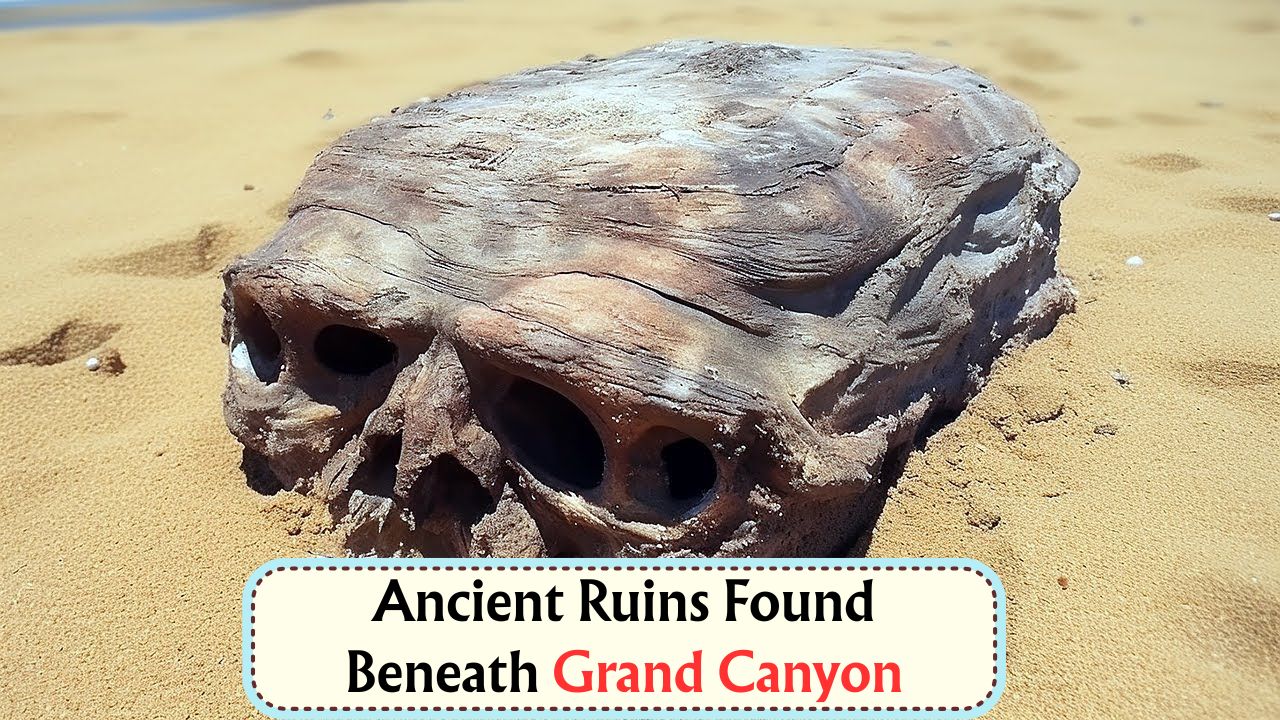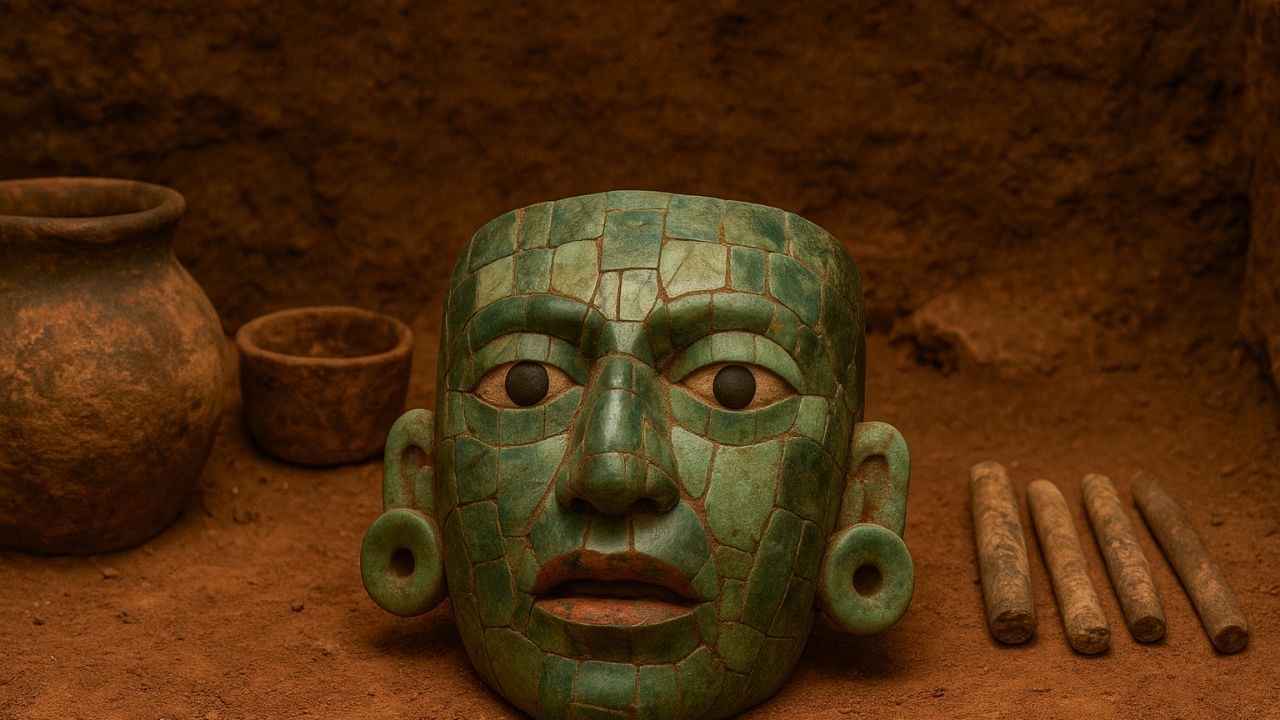Ancient Tombs – In a jaw-dropping revelation that is rewriting the history of ancient Europe, archaeologists in Poland have unearthed a series of massive tombs believed to be older than Egypt’s legendary pyramids. These newly discovered burial sites, located in the region of Kujawy in central Poland, are estimated to date back more than 5,500 years—predating the Great Pyramid of Giza by several centuries. This significant find is shining new light on prehistoric societies in Europe and their surprising architectural and cultural sophistication.
What Exactly Was Discovered in Poland?
The excavation project, led by a team of Polish archaeologists, uncovered several “megalithic tombs”—also known as long barrows or passage graves. These structures are thought to be communal burial sites from the Neolithic era, built using massive stones and earthen mounds.
Key Features of the Polish Tombs:
- Located in the Kujawy region of central Poland
- Estimated age: Over 5,500 years
- Size: Some tombs stretch over 150 feet in length
- Orientation and layout suggest astronomical alignment
- Rich grave goods found, including tools, pottery, and jewelry
- Believed to be part of the Funnelbeaker culture
These tombs were likely used for ritualistic purposes and reflect the burial customs of one of Europe’s earliest farming communities.
Older Than the Egyptian Pyramids: Why Is This Important?
The Great Pyramid of Giza was built around 2560 BCE, while the tombs discovered in Poland are believed to date back to approximately 3600 BCE. This makes the Polish tombs nearly a thousand years older than the Egyptian pyramids, redefining timelines in European prehistory.
Significance of This Age Gap:
- Demonstrates early architectural skill in Europe
- Suggests organized communities with religious or spiritual beliefs
- Challenges traditional narratives that attribute monumental architecture exclusively to the Middle East and Egypt

The Funnelbeaker Culture and Its Mysteries
The tombs are thought to have been constructed by the Funnelbeaker culture, a prehistoric society named after the distinctive funnel-shaped pottery they produced. This culture flourished across parts of modern-day Poland, Germany, and Scandinavia.
Key Traits of the Funnelbeaker People:
- Practiced early agriculture and animal domestication
- Built long megalithic structures and stone graves
- Likely believed in ancestor worship and life after death
- Left behind artistic pottery and stone tools
This culture’s existence proves that prehistoric Europeans had developed complex societies with belief systems and technical capabilities far ahead of what was previously assumed.
Architecture and Construction: A Stone Age Marvel
The size and structure of the tombs indicate advanced planning, labor coordination, and knowledge of construction. Some tombs were built using massive stone slabs, which would have required extensive effort to transport and position—especially without the aid of modern tools.
Architectural Highlights:
- Tombs aligned with celestial bodies (sunrise/sunset on solstices)
- Use of heavy stone boulders, some weighing several tons
- Central burial chambers surrounded by supporting stones
- Covering mounds made of earth and timber
This complexity suggests not only technical expertise but also strong social cohesion within the community.
What Was Found Inside the Tombs?
Alongside skeletal remains, researchers discovered a rich collection of artifacts, indicating a hierarchical society where certain individuals were buried with honors. These grave goods provide insight into the daily lives, trade networks, and artistic expression of the time.
 Shocking Discovery Beneath the Grand Canyon: Did an Ancient Civilization Beat Columbus to America?
Shocking Discovery Beneath the Grand Canyon: Did an Ancient Civilization Beat Columbus to America?
Items Recovered:
- Polished stone axes and tools
- Decorative pottery and beads
- Animal bones (possibly ritualistic offerings)
- Traces of red ochre (used in burial ceremonies)
- Charcoal samples for radiocarbon dating
These findings will undergo further laboratory analysis to reveal more about the tombs’ occupants and their lifestyles.
Broader Impact on European Archaeology
This discovery has captivated historians and archaeologists worldwide. It not only puts Poland on the map of ancient megastructures but also prompts a reevaluation of early European civilizations. The fact that such monumental structures existed in central Europe so early adds a new chapter to humanity’s shared heritage.
Reactions from the Academic World:
- Polish archaeologists: “This discovery proves Europe was not behind in megalithic traditions.”
- European institutions: Increased interest in comparative Neolithic research
- UNESCO: Potential consideration for World Heritage status
These tombs could soon join the ranks of Stonehenge and other global prehistoric sites as symbols of ancient human ingenuity.
FAQs: Ancient Polish Tombs
Q1. How old are the tombs found in Poland?
These tombs are estimated to be over 5,500 years old, dating back to around 3600 BCE.
Q2. Are they really older than the pyramids of Egypt?
Yes, they predate the Great Pyramid of Giza by nearly 1,000 years.
Q3. Who built these ancient tombs?
They were likely constructed by the Funnelbeaker culture, an early Neolithic society in Europe.
Q4. What kind of artifacts were found inside the tombs?
Archaeologists found pottery, stone tools, beads, animal bones, and human remains.
Q5. Where exactly in Poland were the tombs discovered?
The tombs were found in the Kujawy region of central Poland, a historically rich archaeological zone.






